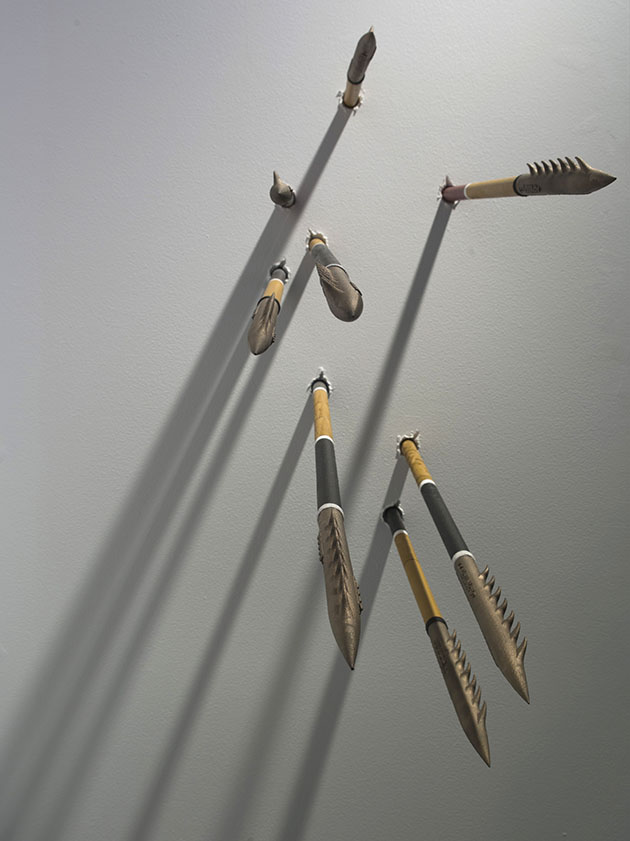Samuel Calvert Night Attack of the Natives near Lake Hope 1865, wood engraving, 18 x 23.5cm, featured in Illustrated Australian News. Private collection.
WARRIOR
Wiradjuri leader Windradyne (c. 1800–1829) was feared by colonists as a dynamic and imposing warrior for his people. He was targeted by violent vigilante settler groups for the ‘theft’ of some potatoes. Potatoes had been previously offered to him and his family and companions as some sort of paltry offering; it was a one-time deal, evidently. Windradyne and his people were quickly and violently being dispossessed of access to their country and staple crops. The settler-grown potatoes had deposed any sign of previous native plantation and now grew in their place. So, the Wiradjuri people decided to access this new crop that was growing on their country, to which they had had access from time immemorial. Surely this was understandable, even through the primitive British system of property law. Instead, the settlers ‘retaliated’ against the Wiradjuri men, women and children, massacring them. Windradyne survived and vowed to challenge the perpetrators of this event.[1]
Samuel Calvert’s engraving Night Attack of the Natives of Lake Hope (1865) evokes this aftermath, albeit from a colonist-biased perspective. The ‘black warrior’ occupies a treacherous zone within the dominant psyche, particularly when expressed in colonial depictions. The imposing, noble Aboriginal warrior was sometimes kept as a trope for the localised colonial—stamped on newspapers and consumer products—depicting a sort of perverted sovereignty. In this case, the male Aboriginal warrior is portrayed as effeminate (seen on tip-toe and contorted) with ghoulish (eyes bugged out), creeping up on the sleeping settlers. While these warriors are strong and to be feared, it was probably more important that an instinctive, mindless ferociousness was exaggerated to justify their inevitable, retaliatory, and merciless despatch. The Aboriginal child was seen as fair game, but their execution was carried out with some regret or discretion. The Aboriginal warrior was to be killed and then touted as a trophy. Such propagandistic depictions have worked to assist and corral settler violence over the past 200 years on this continent.
(Ryan Presley Aug. 2019)
[1] “Episode 1: They Have Come to Stay,” ABC documentary series First Australians, first screened 12 October 2008.
’
Ryan Presley Warriorism (detail) 2013, oak, synthetic polymer paint, 3D printed stainless steel. CAD: Sam Canning. Photo: Carl Warner.
Copyright © All rights reserved



